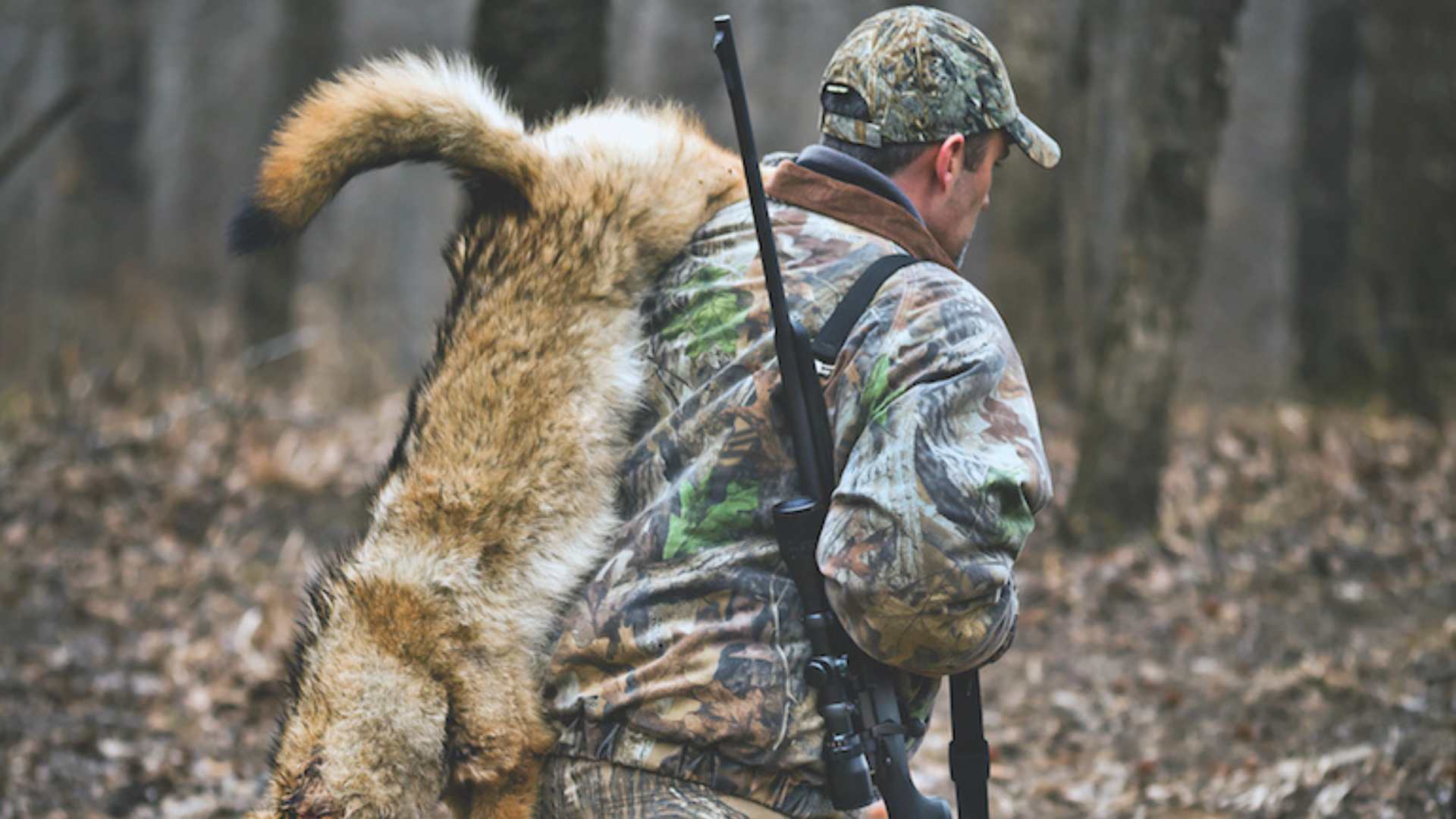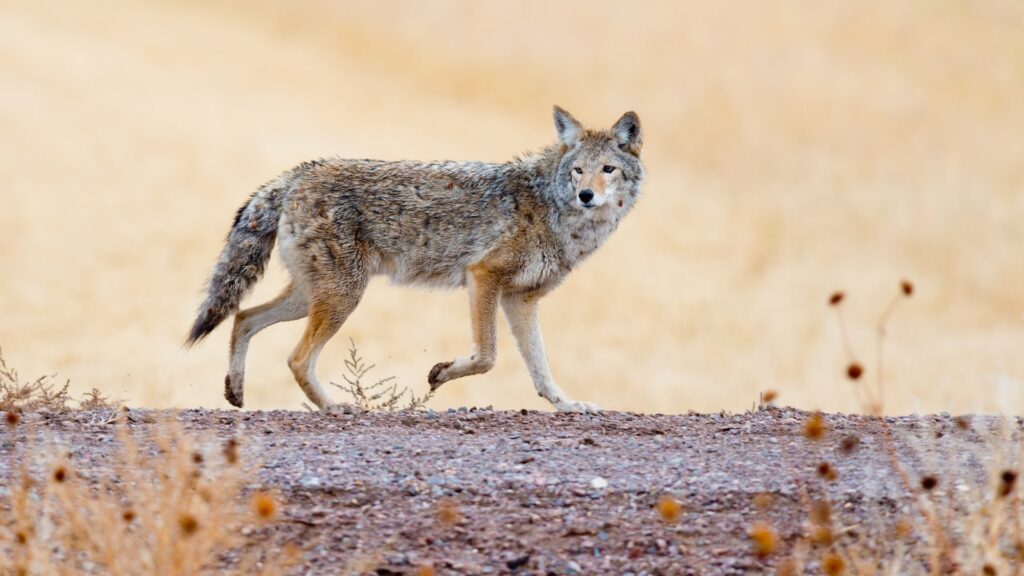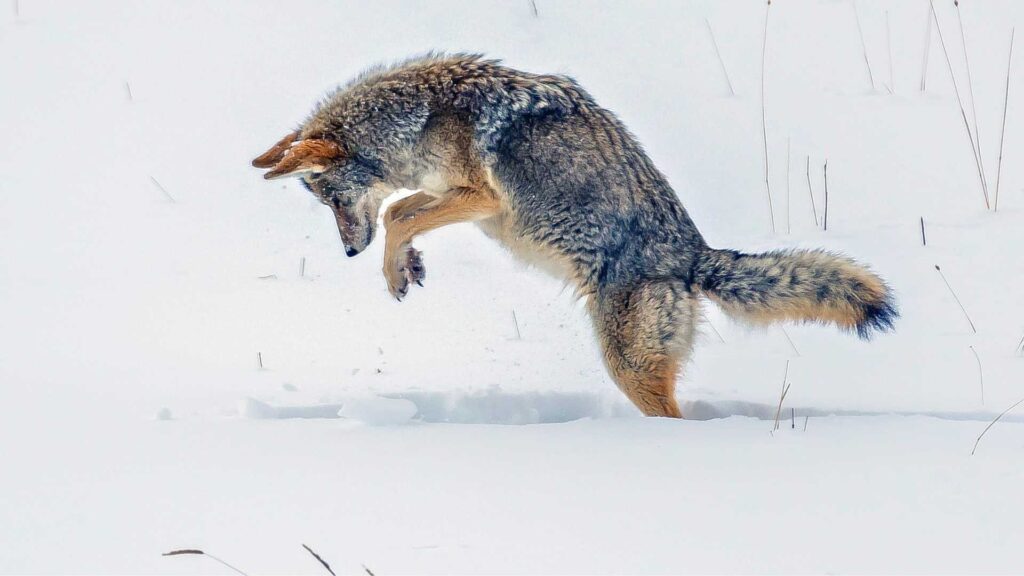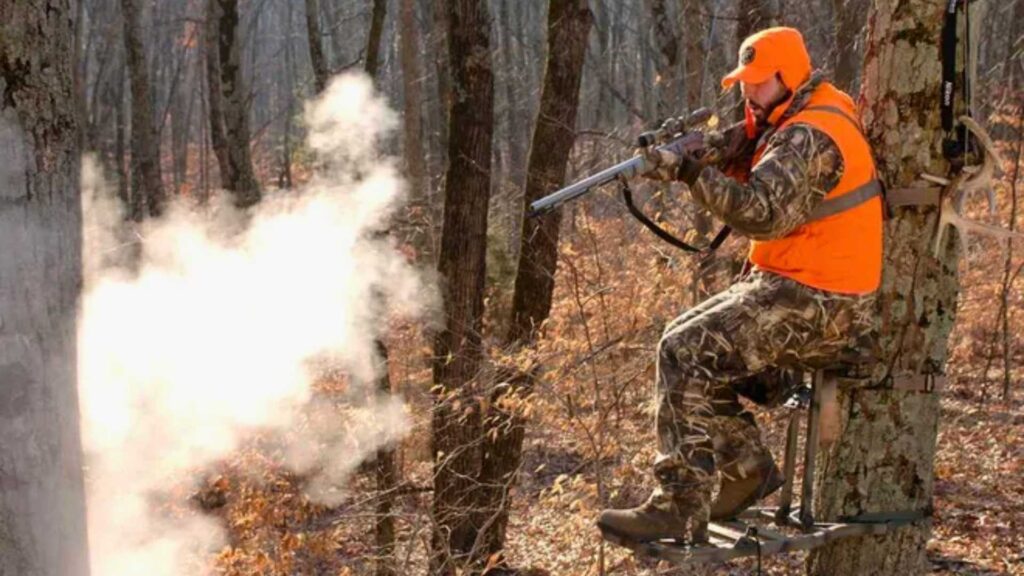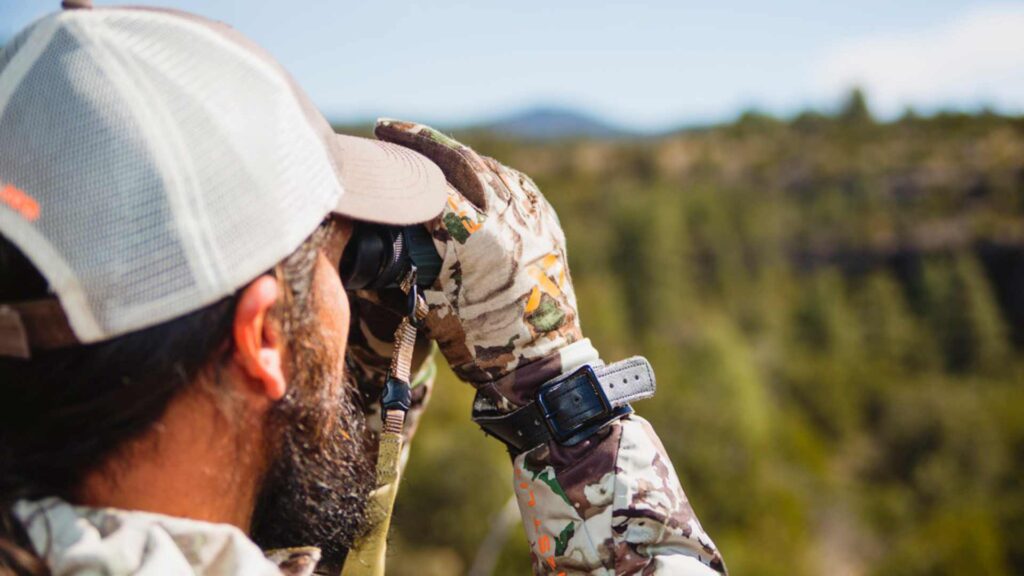How To Hunt Coyotes (6 Tips): Become a Fierce Predator!
Coyote hunting has gained immense popularity among outdoor enthusiasts and hunters in recent years.
This comprehensive guide will equip you with the knowledge and skills needed to delve into the art of coyote hunting.
From understanding the behavior of these cunning predators to employing effective hunting techniques, let us teach you how to hunt coyotes!
Understanding Coyotes
Before setting out on a coyote hunting expedition, it’s essential to familiarize yourself with the characteristics and behavior of these resilient creatures.
Coyotes are highly adaptable and can be found in various habitats across North America. They are opportunistic predators known for their keen senses, including excellent eyesight, acute hearing, and a highly developed sense of smell.
Learning about their social structure, hunting patterns, and territorial instincts will give you a strategic advantage in the field.
Selecting the Right Gear
To increase your chances of a successful hunt, it’s crucial to have the appropriate gear.
Here are some essential items to consider:
Firearms
Coyotes are cunning and elusive creatures, demanding a firearm that offers precision, versatility, and stopping power. One of the most popular and effective choices for this pursuit is a high-powered rifle chambered in .223 Remington or .22-250 Remington.
Bolt-action rifles or AR-platform rifles are ideal for their accuracy and ease of use, enabling hunters to engage targets swiftly and accurately. Equipping your rifle with a quality scope is essential to enhance target acquisition and shot placement.
Ammunition
Choose quality ammunition designed specifically for predator hunting, offering a balance between velocity, penetration, and terminal performance.
Optics
Invest in a reliable scope or binoculars to enhance your ability to spot coyotes from a distance and make accurate shots. A good pair of binoculars can greatly improve your hunting success, so make sure to pick the right one.
Calls and Decoys
Electronic or mouth-blown predator calls, along with decoys, can be highly effective in attracting coyotes within range. Experiment with a variety of distress calls, howls, or rabbit squeals to find what works best in your hunting area.
Scouting and Locating Coyotes
Scouting and locating coyotes is an art that can significantly elevate your hunting game. As nocturnal creatures, coyotes are most active during dawn and dusk, making these prime times for scouting.
Begin by identifying their habitats, such as brushy areas, grasslands, or dense woods, where they seek cover and prey. Utilize game cameras to monitor their movement patterns, feeding spots, and travel routes, providing invaluable insights into their behavior.
Coyotes are highly territorial, so listen for their distinct yips and howls during the night to pinpoint their locations. Employing predator calls, such as rabbit or rodent distress calls, can effectively attract coyotes within range.
Additionally, pay attention to signs of their presence, like tracks, droppings, and fur tufts, which will aid you in narrowing down their exact whereabouts.
Scouting and locating coyotes demand patience and keen observation, but mastering these skills will undoubtedly maximize your hunting success.
Effective Hunting Techniques
When planning your hunt, be sure to check with your local wildlife authorities, obtain any necessary permits or licenses, and be aware of any restrictions or guidelines related to hunting coyotes or using specific hunting techniques.
Stand Hunting
Stand hunting is a highly effective technique for coyote hunting, requiring patience, strategy, and the art of blending into the natural surroundings. The concept of stand hunting revolves around choosing a concealed location, such as a tree stand or ground blind, and waiting quietly for coyotes to come within shooting range.
It’s also probably one of the easiest methods for learning how to hunt coyotes.
Scout for areas with high coyote activity, like game trails or known den sites, and set up your stand strategically downwind to avoid being detected by their keen sense of smell.
Camouflage yourself thoroughly and remain motionless, as even the slightest movement can alert these vigilant predators.
To increase your chances of success, use predator calls to lure coyotes into your shooting zone, imitating distress sounds of small animals or prey.
Stand hunting is not only a test of endurance but a rewarding method that allows hunters to witness the natural behavior of these intelligent creatures up close.
Spot-and-Stalk
Spot and stalk hunting is an exciting and challenging technique that demands stealth and sharp senses from the hunter. The method involves spotting coyotes from a distance, often with the aid of binoculars or a spotting scope, and then carefully closing the gap to get within shooting range.
This technique is particularly effective in open terrains, grasslands, and sparse vegetation, where visibility is high.
To successfully spot and stalk coyotes, move slowly and quietly, utilizing natural cover and terrain features to remain concealed. When a target is spotted, keep a low profile, moving from one hiding spot to another, and avoid any sudden movements that could spook the wary predators.
Patience is key as you close the distance, waiting for the opportune moment to take a well-aimed shot.
Spot and stalk hunting requires a deep understanding of the coyote’s behavior and habitats, but it offers the thrill of a challenging pursuit and the satisfaction of a successful stalked kill.
Calling from a Vehicle
Calling from a vehicle, often referred to as “mobile hunting,” is a dynamic and efficient technique for pursuing coyotes across vast landscapes.
This method involves driving slowly through suitable coyote habitats while periodically stopping to emit predator calls from the vehicle’s concealed position.
By using electronic callers or mouth calls, hunters can mimic the distress sounds of injured animals, enticing curious coyotes within earshot to investigate the potential meal.
Calling from a vehicle allows hunters to cover extensive areas quickly, increasing the chances of encountering coyotes and minimizing the risk of spooking them. Ensure that the vehicle is parked securely and away from busy roads, and always abide by traffic laws and hunting regulations.
Additionally, remember that calling from a vehicle is most effective in areas with low hunting pressure and minimal disturbance, as coyotes can quickly adapt to human presence. If executed responsibly and thoughtfully, calling from a vehicle can be a highly rewarding method, providing thrilling opportunities for successful coyote hunts.
Camouflage and Concealment
Coyotes have sharp eyesight and are quick to detect any unusual movements. Camouflage and concealment are integral elements in successful coyote hunting. Mastering the art of blending in with the natural surroundings is key to getting within shooting range undetected.
Choose camouflage clothing that matches the terrain you’ll be hunting in, whether it’s forested areas, grasslands, or snow-covered landscapes. Consider using 3D camo patterns to break up your outline and blend seamlessly with the environment.
Employing natural vegetation or artificial blinds as concealment can also provide extra cover while waiting for a shot opportunity.
Paying attention to wind direction is crucial, as coyotes rely heavily on their sense of smell. Position yourself upwind of their expected approach to avoid being detected by their keen noses.
Hunting Ethics and Regulations
Responsible hunting is essential for the conservation of wildlife and maintaining the balance of ecosystems.
Familiarize yourself with local hunting regulations, obtain the necessary licenses and permits, and always practice ethical hunting practices. Avoid shooting beyond your effective range, take clean and humane shots, and respect private property boundaries.
Conclusion
The process of learning how to hunt coyotes is an exhilarating and challenging pursuit that requires knowledge, skill, and patience.
Remember, coyote hunting is not just about the thrill of the chase; it is also an opportunity to contribute to wildlife management and conservation efforts.
So, grab your gear, prepare for the hunt, and embrace the excitement of the great outdoors while mastering the art of coyote hunting.
Happy hunting!
Image sources: Game & Fish, GoHunt, The Florida Times – Union
